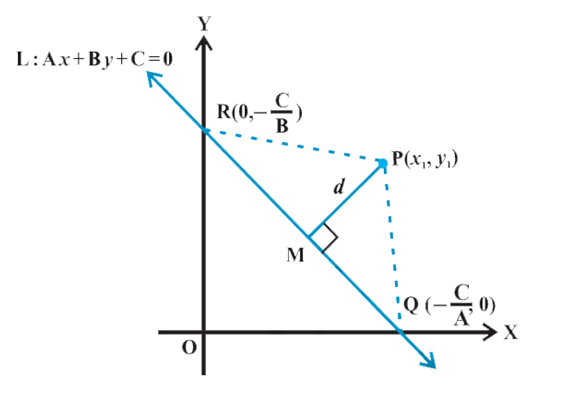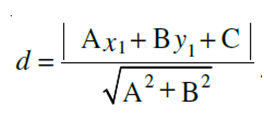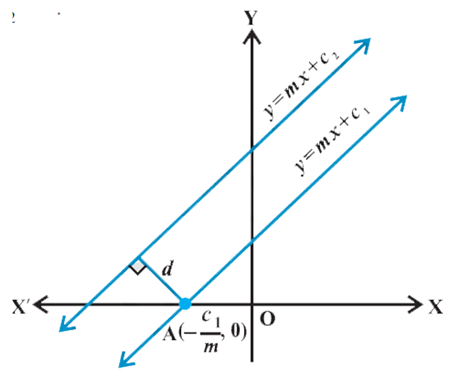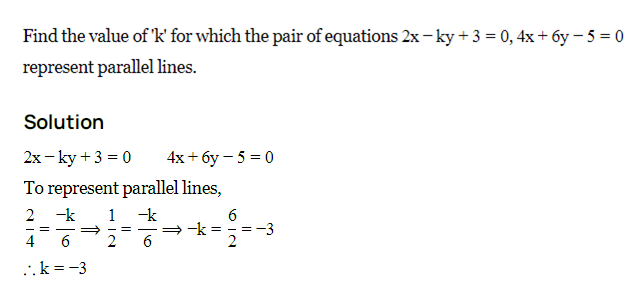- Books Name
- AMARENDRA PATTANAYAK Mathmatics Book
- Publication
- KRISHNA PUBLICATIONS
- Course
- CBSE Class 11
- Subject
- Mathmatics
Distance of a Point from a Line and Distance between two parallel lines
The distance of a point from a line is the length of the perpendicular drawn from the point to the line. Let L : Ax + By + C = 0 be a line, whose distance from the point P (x1, y1) is d. Draw a perpendicular PM from the point P to the line L


Thus, the perpendicular distance (d) of a line Ax + By+ C = 0 from a point (x1, y1) is given by

Distance between two parallel lines
We know that slopes of two parallel lines are equal. Therefore, two parallel lines can be taken in the form
y = mx + c1 ... (1)
and
y = mx + c2 ... (2)
Line (1) will intersect x-axis at the point A(-c/m,0)

Distance between two lines is equal to the length of the perpendicular from point A to line (2). Therefore, distance between the lines (1) and (2) is

If lines are given in general form, i.e., Ax + By + C1 = 0 and Ax + By + C2 = 0,
then above formula will take the form

Example:

Example: If the lines 2x + y - 3 = 0, 5x + ky - 3 = 0 and 3x - y - 2 = 0 are concurrent, find the value of k.
Solution Three lines are said to be concurrent, if they pass through a common point,
i.e., point of intersection of any two lines lies on the third line. Here given lines are
2x + y – 3 = 0 ... (1)
5x + ky – 3 = 0 ... (2)
3x – y – 2 = 0 ... (3)
Solving (1) and (3) by cross-multiplication method, we get

or x= 1, y= 1
Therefore, the point of intersection of two lines is (1, 1). Since above three lines are
concurrent, the point (1, 1) will satisfy equation (2) so that
5.1 + k .1 – 3 = 0 or k = – 2.

 KRISHNA PUBLICATIONS
KRISHNA PUBLICATIONS
